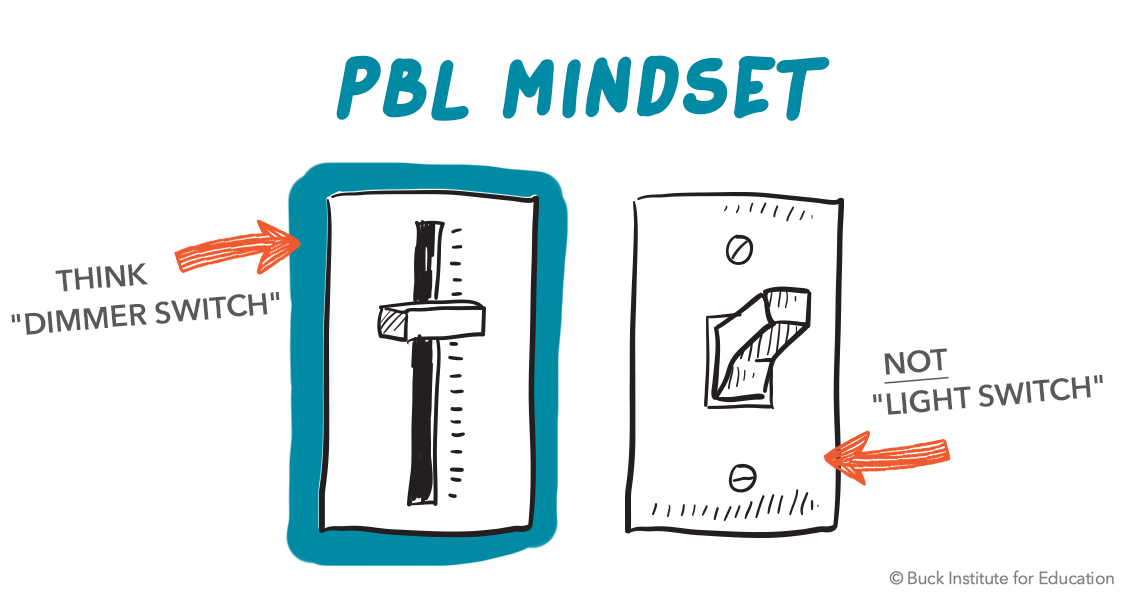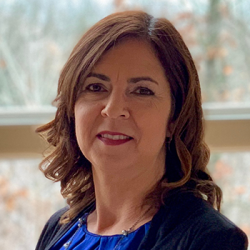Originally published May 9, 2017 – updated Jan 27, 2021.

“Well, we did our project.”
It was my third project debrief meeting of the morning with classroom teachers new to Project Based Learning, and it was the third time our conversation had started this way.
I replied, “So you were able to implement the project you wrote during your PBL 101 workshop. How do you feel it went overall?” The teachers responded: “Really well—we learned a lot. We revised our project as we went. Our students did a great job presenting at the end, but I think we were all relieved to go back to business as usual when it was over.”
"Back to business as usual." My heart sinks when I hear these words.
As an instructional coach and PBL facilitator, I often work with teachers to support their development and implementation of projects. Unfortunately, it's not uncommon for teachers just starting their PBL journey to view projects as an event rather than a philosophy for meaningfully engaging students with content.
What became clear through my conversations with the classroom teachers was their regard for projects as something to complete in order to get back to what they felt to be more important matters.
The team's view of PBL was like the simple settings on a light switch: “on” and “off.”
When they turned “on” PBL, then learning was student-centered, authentic, rigorous, collaborative, reflective and directed by a driving question.
But when they turned it back “off,” then learning was teacher-directed, prescriptive, focused and guided by what questions would be on the end of unit test. And the teachers’ relief at returning to “business as usual” indicated that PBL was turned “off” more often than “on” in their classrooms.
The danger of subscribing to this “light switch” view of Project Based Learning is that it reinforces the “projects as events” mentality. They are seen as the exception, and not the rule. In a classroom where PBL is “on” only once or twice a year, students are not appropriately positioned for success. Instead, projects remain unfamiliar, challenging vehicles for learning and students struggle to transition between two very different experiences.
Does this mean PBL is an “all or nothing” approach? Not at all.
Although some schools do have structures and systems in place that support full-time use of PBL, it can be difficult for teachers in more traditional settings to teach all content through projects.
In more traditional situations, we advocate a “dimmer switch” approach to PBL.
When teachers design a Gold Standard Project, it incorporates all of the Essential Design Elements—Key Knowledge, Understanding, and Success Skills; a Challenging Problem or Question; Sustained Inquiry; Authenticity; Student Voice and Choice; Reflection; Critique and Revision; and a Public Product.
Not all content, however, is project-worthy, and not every PBL experience needs to come in the form of complete Gold Standard Projects.
With the "dimmer switch" approach, teachers use many (not all) project design elements in their unit plans.
They can continue to highlight and use those elements outside project work to keep the language and mindset of PBL alive, even when students are not engaged in Gold Standard project work.
The more elements that are in use, the higher the dimmer switch setting and the “brighter” the PBL experience becomes. Some units are more PBL-esque, and some units are less, but the PBL approach never goes completely dark.
Here's what PBL Elements might look like in “regular” units...
Let’s look at a 7th grade science unit on "diseases and how they spread" as an example.
The work described doesn't fit the definition of a Gold Standard project. But the unit can provide students the opportunity to gain confidence with some of the component parts of Gold Standard PBL.
Here's what that might look like in this example...
- For "Sustained Inquiry" — The teacher introduces and regularly refers to a driving question that frames and connects daily unit work. Before students dive into learning activities, they are asked to record their current understanding of bacteria and viruses in a reflection journal.
- For "Reflection" — As the learning progresses, students asked periodically to revisit their initial or subsequent ideas and reflect on how their understanding about the content is either being reinforced or challenged by classroom activities, readings, and lab investigations. As the unit concludes, students are asked to respond to the driving question as a final reflective writing.
- For "Student Voice & Choice" — Toward the end of the unit, students are allowed to choose how they will share their understanding of how diseases spread by choosing from a menu of options.
Our goal? For PBL to become “business as usual.”
Adopting the "dimmer switch" approach to PBL can help teachers in more traditional school settings avoid the hard starts and stops that otherwise come from that “PBL on” and “PBL off” way of thinking.
It builds understanding around the Essential Design Elements before complete Gold Standard project experiences, and it maintains the PBL mindset between projects.
It avoids the “projects as events” and promotes “projects as the norm.”
And it ensures that PBL—not traditional instruction—becomes what the classroom community views as “business as usual.”
For more ideas on this topic, check out How Districts Help Teachers See Stepping Stones to Project Based Teaching from 2016. It shares the story of teachers in Texarkana School District who discovered their own "dimmer switch" for PBL.

